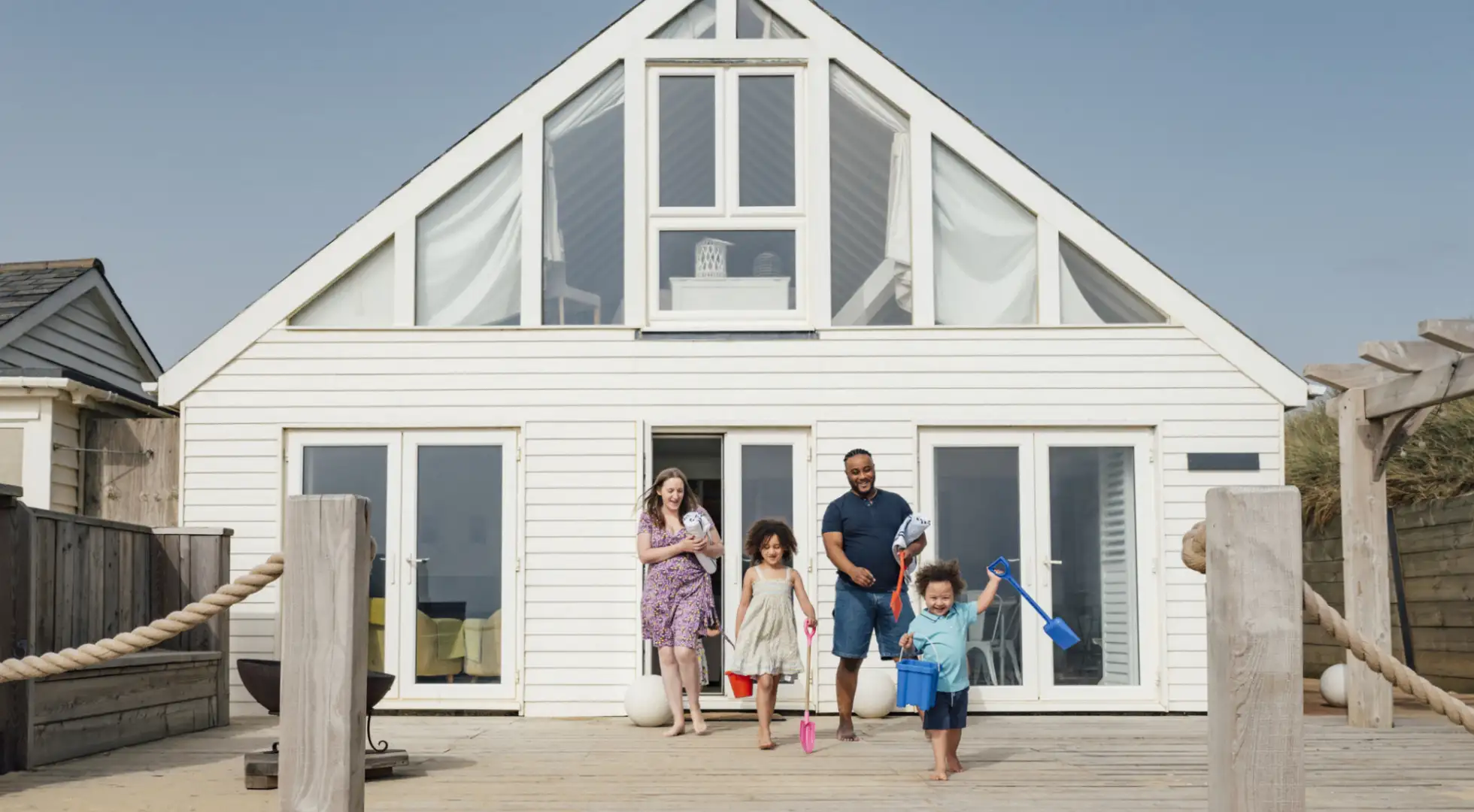Using a Cash-Out Refinance to Buy a Second Home

One of the best uses for home equity is to acquire more real estate.
And what if you could buy a permanent vacation spot while earning rental income when you’re not using it?
For these and other reasons, many people are considering buying a second home with the proceeds from a cash-out refinance.
Here’s what you need to use this strategy.
Check today's cash-out refinance rates.
1. Equity In The Current Property
Most cash-out refinances allow you to borrow up to 80% of your home’s value (80% loan-to-value or LTV). This assumes a one-unit primary residence.
But to get a substantial amount of cash, your current loan should be no more than 60-70% of the home’s value. This allows you to tap into 10-20% of the value for cash.
Current Value | $500,000 |
Current Loan | $300,000 (60%) |
New Loan | $400,000 (80%) |
Closing Costs | $7,000 |
Cash to Borrower | $93,000 |
In this example, the homeowner needed $200,000 in equity to access $93,000 in cash.
If you are cashing out an investment property, you will need even more equity, since the maximum LTV is 75%.
Cash-Out LTV Limits for Conventional Loans | ||
Home use | 1 unit | 2-4 unit |
Primary home | 80% | 75% |
Second home | 75% | ineligible |
Investment property | 75% | |
Check today's cash-out refinance rates.
2. A Low Second Home Price
In the above scenario, the borrower received $93,000 at closing. In a perfect world, she would find a second home in the $90,000 to $100,000 range and pay cash.
This would mean no mortgage on the second home (more on why this is preferrable later).
However, you could also use this money as a down payment.
The maximum LTV on a conventional second home mortgage is 90%.
This means, with the above $93,000, you could buy a second home up to about $900,000.
However, this would require private mortgage insurance (PMI). So it’s best to put 20% down or more on the new second home.
With $93,000, you could buy a $465,000 second home with 20% down.
Cash Available from Refinance | $93,000 |
Best Down Payment | 20% |
Second Home Purchase Price | $465,000 |
3. Cash-Out Refinance and Second Home Rates
One drawback to cashing out a primary residence to buy a second home is that both new mortgage rates will be high. Those with high credit scores will receive the best rates for both loans.
Cash-out mortgage: You will replace your existing rate with a new (probably higher) cash-out loan rate. A cash-out loan is one of the riskiest kind according to lenders. Expect to receive a rate that’s 0.25% to 0.50% higher than standard market rates at the time.
Second home mortgage: In early 2022, Fannie Mae and Freddie Mac increased rates for second homes to match those of investment properties. They effectively signaled that they don’t want to finance second homes. These rates are now 1-2% higher than for primary residences. Get a quote from various banks and lenders for proprietary second home mortgages to compare with the Fannie Mae program.
4. Second Home DTI Must Include Both Mortgages
It can be difficult to qualify for both the cash-out refinance and second home loan. Your debt-to-income (DTI) will include both loans. You will likely need a high income to qualify.
Note that you can not count future rental income on a second home to help you qualify.
Here’s an example.
Current Loan | Cash-Out Refi | Second Home | |
Loan Amount | $300,000 | $400,000 | $350,000 |
Rate | 4% | 6.5% | 7.5% |
Payment (with taxes/insurance) | $1,930 | $2,400 | $3,000 |
Other Monthly Debts | $500 | $500 | $500 + $2,400 (for primary home) |
Monthly Income | $10,000 | $10,000 | $10,000 |
DTI | 24% | 29% | 59% |
Result | Qualifies | Qualifies | Does Not Qualify |
Your maximum allowable DTI for all loans is 40-45%. Before taking cash out of your primary home, make sure your DTI for the second home mortgage is in that range.
In many cases, you can qualify for the cash-out loan but not an additional vacation home mortgage.
Can I Use The Second Home as a Short-Term Rental?
Fannie Mae allows you to rent out the second home for part of the year. You must use it as a personal second home as well.
Fannie Mae does not define a specific percentage or number of days you must use the home. It simply says it “must be occupied by the borrower for some portion of the year.”
Some lenders advise following IRS rules for owner-occupancy: 14 days per year or 10% of the number of days it’s rented.
For example, if the property is rented for 100 days, spend 10 days there.
Owning a second home can generate as much or more income than it costs, making the second home purchase a great place to vacation and a solid investment as well.
Just keep in mind that you can’t use rental income to qualify for the purchase or refinance of a second home. Your other income must support the full payment.
Get Approved for a Second Home
With home values rising, it’s a great time to tap into your home’s equity to purchase a second home.
And with the possibility of rental income, owning that second home could cost little to nothing.
See if you qualify for the cash-out refinance and second home mortgage with a reputable lender.




